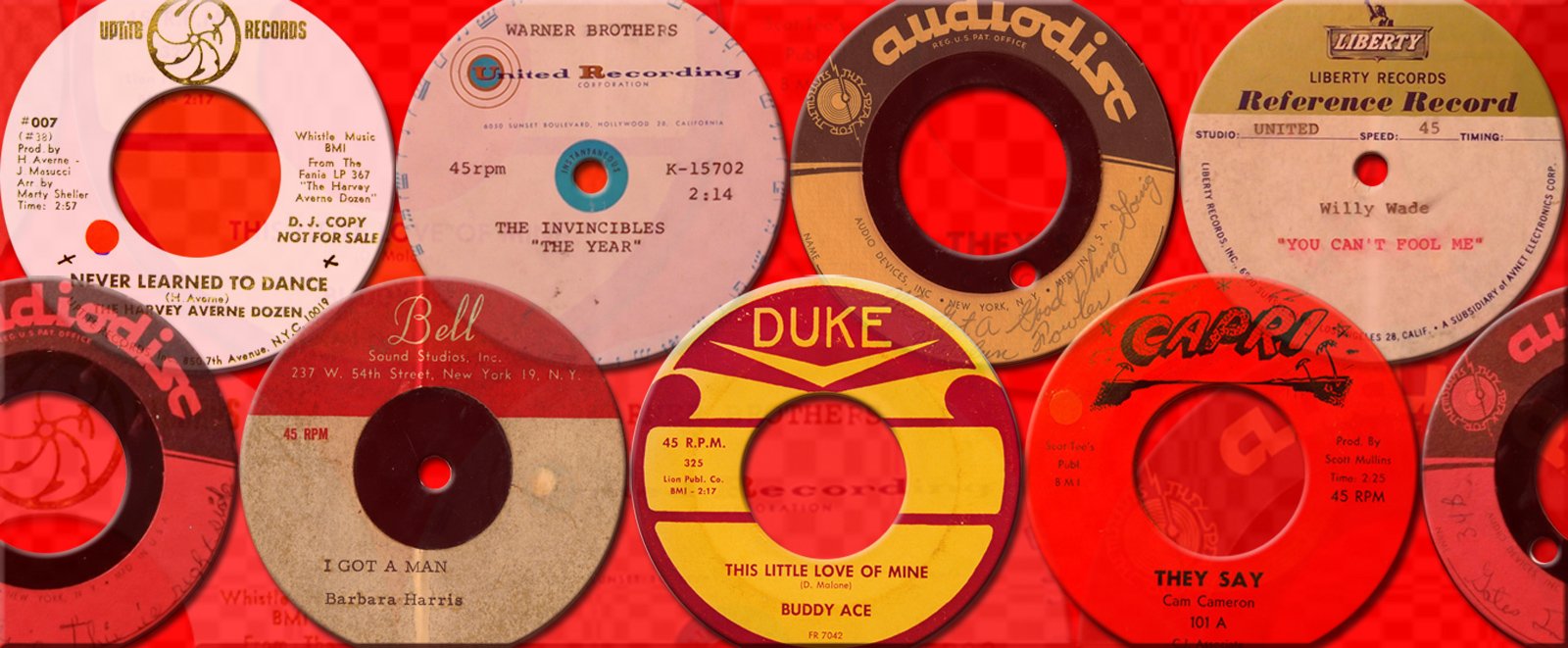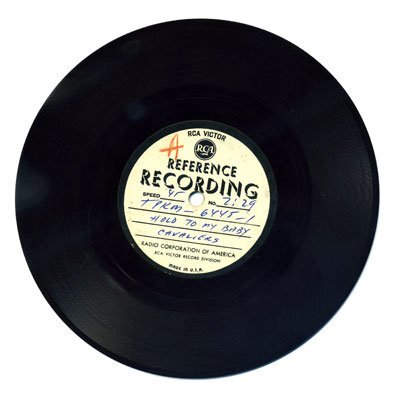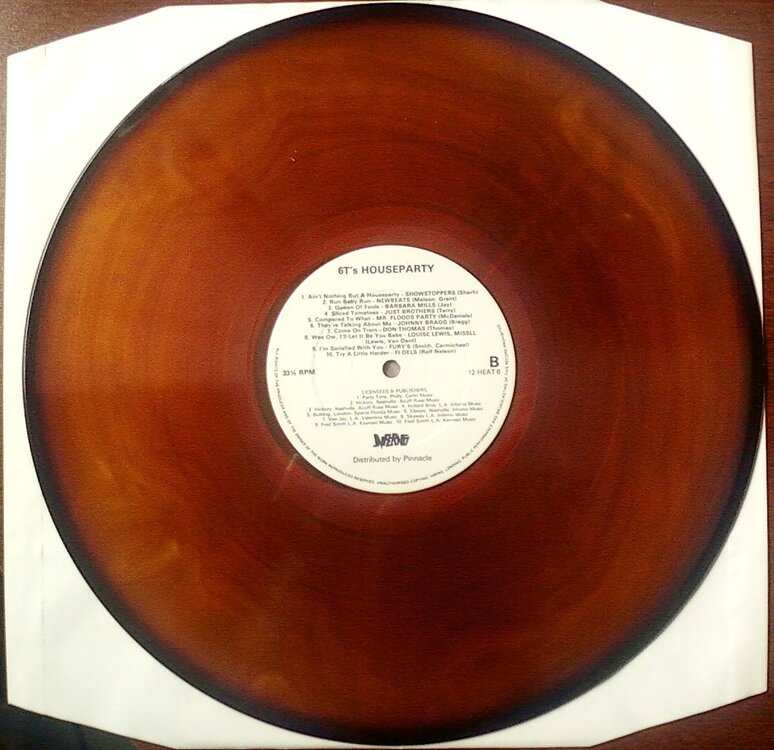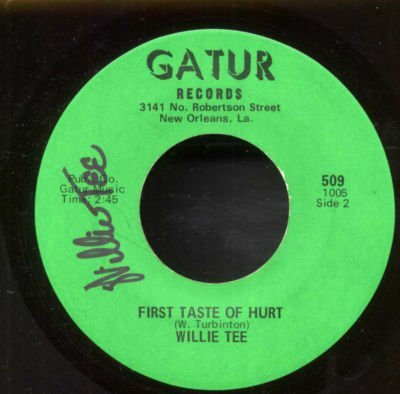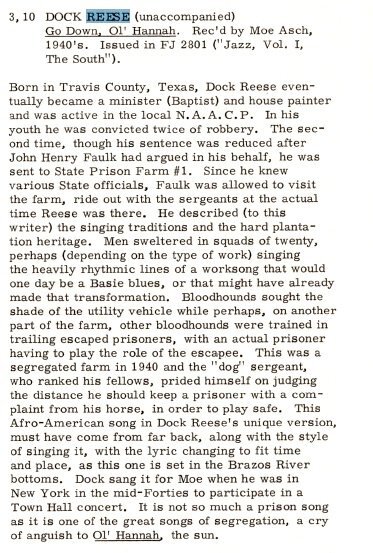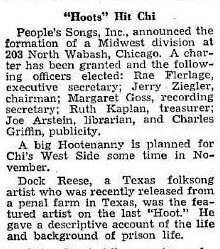-
Posts
3,160 -
Joined
-
Last visited
-
Days Won
111 -
Feedback
100%
Content Type
Forums
Event Guide
News & Articles
Source Guidelines and Help
Gallery
Videos Directory
Source Store
Everything posted by Amsterdam Russ
-
With a snipe in place, I can buy records even when I'm asleep! Nearly every day I wake up not knowing what records I've bought the night before. Now that's fun!
-
Ultimately, yes, 1 & 3 are the same. There are many reasons why an acetate might be cut for in-house use. In these specific instances, I think the difference (and the point that I wanted to make), is that number 1 is very much a finished track. Indeed, it is the version that appears on the album. My feeling here is that the acetate was made, not to decide if this is the take that should be used, but to show the finished product, and for those involved to perhaps decide if it should be included on the LP or not, or even released as a 45 or not. Number 3, on the other hand, is a take - a possible interpretation of how the song might sound. It is not a finished product. Indeed, acetates of finished tracks would also be used as reference copies and filed in the archives. RCA provide us with great examples of those...
-
It didn't? I could swear I've seen it on UK Fontana. Maybe I'm hallucinating as there's no mention of a UK release in the Record Collector price guide!
-
Another reason for an acetate being cut is as a vanity item. Not only could you and your band cram into a tiny booth, record your own song and have it cut in disc, but recording studios often provided this service. In part, it was an extra revenue stream, but also meant that studio owners had a constant supply of potential new talent: everyone in the record industry wanted to pick up on "the next big thing". Local groups and singers would walk into a local studio and cut an acetate in the hope of finding local, and maybe in their dreams, national success. For the vast majority of acts however, the acetate would be the closest they'd ever get to realising that dream. The acetate below (advance warning it's not soul!) is an example of exactly this, a short-lived dream, one that lasted a just few seconds over two minutes! https://youtu.be/SeJonCYtAao
-
Acetates served a number of purposes. They might be cut after a session, so that those involved had a reference copy: a personal copy for the performers, perhaps. They would also be used at meetings where the record company's execs would discuss what should and shouldn't get released next. And, exactly as Pete says, they could also be used as super-advanced 'advance promo' copies, so that companies could give DJs exclusives and at the same time get advance exposure for a 45 before it was officially released. If sufficient DJs didn't like a track they heard on acetate, it's probable that it may have been pulled from the release schedule and not even pressed. Here are some examples: 1/ In-house acetate. This very probably would have been cut on an acetate for in-house purposes only and for record execs to decide what should be done with it. In this case it didn't get released as a 45 and only featured on Thelma's Sunshower LP. https://youtu.be/c848aE4Om5E 2/ Reference copy. The acetate below was likely cut as a personal reference copy, hence why it shows the name of Barbara Harris rather than The Toys (although I asked Barbara and she doesn't recall owning it). However, if it was indeed made as a personal copy, one can speculate that three copies like this (with Lover's Concerto on the reverse) might have been cut - one for each member of the group. https://youtu.be/UH-nrkcNmLw 3/ Reference copy. The next acetate is an unreleased alt take of Major Lance's "Keep on loving you" and would have been used as a reference copy - possibly listened to away from the studio and alongside the slower version (or maybe even other versions) to determine which take of the song worked best and whether they should look to improve on it (and it obviously did need improving as you can hear the backing vocals break down about half way through). In the end, this take was rejected. Very probably this is the only copy of this track, excluding the master tape should it still exist. https://youtu.be/PV19XiWJ1s8 4/ Promotional copy. The acetate here - of Terri Sharp's debut 45 "A love that will last" - was pressed up specifically as a promotional item to send to record labels by radio DJ and TV presenter Larry Kane in the hope that they might pick it up and give it a release. When the studio time and session musicians were booked, there was no record deal. The sessions were cut speculatively. I know that's exactly the case here because Terri Sharp saw the acetate on YouTube recently and kindly supplied the background info on it. The majors turned it down, but Huey P Meaux released it on his Ventural label and had a hit with it in Texas where it sold over 5,000 copies. After the local success, one of the majors did then pick it up, hence it also being released in the UK US on Fontana. https://youtu.be/I1VW7HLRnCQ So, there you have it - just some examples of acetates cut and used for different reasons.
-
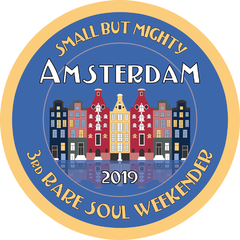
John Rhys - Co-Writer Of Time Will Pass You By
Amsterdam Russ commented on macca's article in News Archives
My first thought on hearing the demo was that Simon & Garfunkel could have handled it very well indeed. -
Wow, it's difficult coming up with even just 12 tunes. To save on the brain-ache, I selected from iTunes the tracks on my computer that have been played the most under the genre of 'Soul'. That seems to be the most convincing selection. They are: 12: Beverly Shaffer - Where will you be (One-derful) 11. Marva Whitney - Ball of fire (King) 10. Cam Cameron - They say (Capri) 9. Liz Lands - Midnight Johnny (Gordy) 8. Johnny McCall - I need you (Al-teen) 7. Barbara Mercer - Call on me (Sidra) 6. A possibly unreleased popcorn thing that impresses only me 5. September Jones - I'm coming home (Kapp) 4. San Francisco TKO's - Make up your mind (Kent) 3. Big Maybelle - I got a feelin' (Okeh) 2. Jimmy Robins - I can't please you (who cares what label) 1. The Townsmen - Please don't say goodbye (Columbia) There you go, no dick swinging, no big hitters, just the tunes that have been played the most through my computer since its count began!
-

John Rhys - Co-Writer Of Time Will Pass You By
Amsterdam Russ commented on macca's article in News Archives
I do hope he got his fair share of royalties when Kylie Minogue covered the song! -
Rather interestingly, I uploaded a track to YouTube about an hour ago and to my surprised found it's been blocked in the USA and all American territories! This is at the behest of Warner Music Group. I have just over 50 tracks on my YouTube channel and it's the first time any song been blocked from being visible in the States. Considering the audience share that comes from there, that's a huge loss of potential viewers and potential ad revenue for YouTube. Seems WMG would rather block content than earn from it.
-

Inferno 6Ts Houseparty 12" - Clear Vinyl Destroyed
Amsterdam Russ replied to Amsterdam Russ's topic in Look At Your Box
A bit crackly here and there, but yes, it plays! As the needle hit the grooves, memories came flooding through the speakers. I was back at the local youth club, hogging the decks, and playing this all the way through from start to finish! Available on both red and clear vinyl as I recall, Dave. -

Inferno 6Ts Houseparty 12" - Clear Vinyl Destroyed
Amsterdam Russ posted a topic in Look At Your Box
My first introduction to Northern Soul! When I bought this in about 82, it was on clear vinyl. Now, 30 years later, it's this colour What's gone wrong - why has it changed this way?? -

Soulsource Record Club Record Of The Day 2012 (Spring)
Amsterdam Russ replied to dthedrug's topic in All About the SOUL
Been getting a lot of thrills out of this Ray Pollard belter lately. Not courtesy of the French EP, I hasten to add, but as the flip to "It's a sad thing" on UA. What a tune! -
-
Well, curiosity killed the cat. I couldn't resist trying to find out some info on the aforementioned Dock Reese. And I'm glad I did. The clipping below comes from the sleeve notes to a 1967 album of folk music called "The Asch Recordings, 1939-1945 Vol 2". And it's well worth a read if you have any interest in the history of American roots music. Moe Asch was in part inspired by Alan Lomax, who so famously made the countless field recordings of American/negro folk music in the 30s and 40s. Having done this little bit of digging, I'm reminded of something that I'd forgotten - that 'folk music' was back then a generic term for all the diverse and unique forms of music that had evolved in the enclaves, mountains, backwoods, cotton fields, towns, villages and prisons of America. It was quite literally the music of the Amercan people. It wasn't what we think of as folk music today, or even 50 years ago. So, when the term Hootenanny was used to describe folk music gatherings in the 30s and after, it could be applied to a gathering of people of absolutely any race, creed or colour - it was just a musical gathering; a jam session; hoedown; knees-up; shindig; wang dang doodle; wingding or whatever... Got any more questions like this one? I love 'em!
-

Pookie Hudson This Gets To Me Is This A Genuine Copy?
Amsterdam Russ replied to slimharpo's topic in Look At Your Box
Sorry to hear you were so upset, but glad you're happy now! -
As has been explained, a Hootenanny is an informal musical gathering, a party of sorts. The word was once specific to folk music, but became more widely accepted (as is shown by the use of the word on your compilation). Doing a little digging, I found the first time the word appeared in Billboard magazine. The clipping dates from 26th October 1946. It's a short read, but it has me intrigued now about the life and times of Texas folk singer, Dock Reese! Also, going back to the origins of the word as described on Wikipedia, I found this brilliant anecdote that had been overlooked: According to Pete Seeger, in various interviews, he first heard the word hootenanny in Seattle, Washington in the late 1930s. It was used by Hugh DeLacy's New Deal political club to describe their monthly music fund raisers. After some debate the club voted in the word hootenanny, which narrowly beat out the word wingding. The first reference to a wingding in Billboard is from 23rd June 1945. Possibly then it predates hootenanny as a word used to describe an informal or impromptu musical event. Now, anyone know how a wingding became a wang dang doodle?
-
Are we talking about bargains we've bought or stuff we've seen others buy for peanuts? Crate diggers must be picking up bargains every day, and I'm forever jealous of the treasure trove discoveries that often get told on these pages from days of yore. Not much in the way of great bargains in my book of life stories, but I have picked up the following in recent times: July last year - unreleased Federal label R&B gem on acetate - $32 January of this year - unreleased Major Lance track on acetate - $30 January of this year - unreleased female soul track on acetate - $32 January of this year - The Toys "I got a man" on acetate - $50 February of this year - unreleased version of "Find my way" on acetate - $33 All fantastic bargains as far as I'm concerned. Funny that, hadn't realised that these were all at about the same price until I looked them up just now. Thirty something must be my lucky number range!
-
If I remember correctly, on the album The Four Tops Live, there is a point in the proceedings where the group are about to have a sing-along with the audience and they describe it as like having a Hootenanny. Therefore, they saw it as an event - a musical get-together or sing-along - rather than a style of music, pretty much the same as is described in the quote from Wikipedia.
-
You may find this useful if you don't know of it already... https://www.45vinylvidivici.net/
-
Got a 'Signed For' today from the UK. It was posted last Weds, so no complaints here. Possibly international items are being expedited quicker than domestic tracked ones.
-
I don't see why it should be one or the other and give a point to each
-

Standing On Solid Ground: Sidney Barnes Autobiography
Amsterdam Russ commented on Chalky's article in News Archives
Got my copy today and it's an impressive 600 pages thick! Sydney was kind enough to autograph it for me, as I'm sure he's doing with every copy, and I'm looking forward to playing the CD that came as part of the package. Great! -

Articles: Ed Wolfrum - Detroit Sound by Rob Moss
Amsterdam Russ replied to Rob Moss's topic in Front Page News & Articles
One of the most informative music-related articles it has ever been my pleasure to read. Thank you! -

'dished' 45's. Does It Concern You As A Collector?
Amsterdam Russ replied to Soul16's topic in Look At Your Box
-
Well, I never knew that as actual fact! Thanks for confirming the guesses of a 17/18 year old! Anyone got a bottle of this on ice today, or maybe even a product shot? Back to the two songs, I think you have to work on the basis that both were immensely popular locally. Each turns up very frequently on eBay and copies are usually very well worn to say the least. You take that to mean they got worn through being played a lot. Which came first - the ad or the song - is a very interesting question... "Scotts on Swingers" is an obvious example of a songs reworked for promotional purposes, as is Steve Karmen's "Breakaway". But what about jingles that became songs later - are there any examples?


